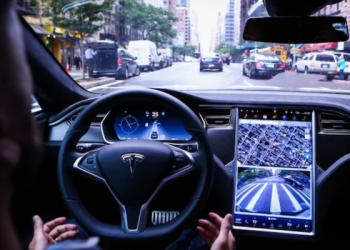As of the first quarter of 2023, the adoption of electric vehicles (EVs) seems to be hitting a turning point. Over a quarter-million EVs were purchased (from January to March) by early adopters, as reported by Kelly Blue Book.
While precise Tesla sales figures remain elusive, this surge signals the increasing popularity of EVs. With advancements making EVs practical for a broader range of U.S. buyers, coupled with the rapid expansion of public charging infrastructure, the question arises: Is now the time to switch to an electric vehicle? To help you decide, here are five pros and cons of electric vehicles:
Pros
1. Multiplce choice
The American market now boasts up to 43 Electric vehicle models for purchase. This diverse selection includes SUVs, sedans, hatchbacks, and pickup trucks, providing options for various preferences. Established mainstream and luxury brands offer most of these choices, with some innovative startup carmakers also entering the scene.
2. Longer range
To quell concerns about range anxiety, most EVs offer an EPA-rated range of 200 miles or more, making them suitable for everyday U.S. driving conditions. Some models even exceed 400 miles per charge. While real-world range can decrease at higher speeds or in cold weather, the overall range has significantly improved.
3. Savings every mile
Driving an EV can lead to substantial cost savings. For instance, covering 100 miles in an EV with a consumption rate of 3 miles per kilowatt-hour (equivalent to 101 miles per gallon) costs around $5.50 with average U.S. electricity prices. Even charging at public stations, which may be pricier, keeps the cost competitive compared to gasoline.
4. Home charging
The majority of households with the means to purchase a new vehicle have access to off-street parking, enabling convenient overnight charging at home. While installing a Level 2 home charging station may be necessary for some larger EVs, the convenience of home charging eliminates trips to gas stations.
5. Performance Advantages
The instant torque and responsive acceleration of electric motors offer a thrilling driving experience. Even moderately powered EVs deliver lively performance, while high-performance models provide impressive acceleration and power.
Cons:
1. Reduced incentives for EV buyers
The scope of federal tax credits for EV purchases has narrowed, limiting options for those seeking tax incentives. Leasing remains a viable avenue for retaining these incentives.
2. Short Supply
Supply chain disruptions caused by the COVID-19 pandemic continue to affect some EV models, resulting in limited availability and potential markups by dealers.
3. More new models coming
The next few years will bring a surge of new EV models to the market, making it tempting to hold off on purchasing now to explore a broader selection in the future.
4. Higher sticker prices
While EVs offer long-term savings, their upfront costs tend to be higher than comparable gasoline vehicles, although industry experts predict eventual price parity.
5. Charging challenges
While home charging is convenient for many, individuals residing in multi-unit dwellings or without access to private parking face challenges in finding reliable charging solutions.
In conclusion, the growing range of EV options, coupled with longer ranges and cost-saving benefits, make electric vehicles an enticing choice for many consumers. As the electric vehicle landscape evolves, prospective buyers have much to weigh in their quest for more sustainable and cost-effective transportation.
Read more on Electric vehicles: Honda, Acura adopt Tesla’s charging standard




![Electric vehicle: 2025 Cadillac Escalade IQ [Photo Credit Cadillac]](https://autojournal.africa/wp-content/uploads/2023/08/2025-Cadillac-Electric-Escalade-IQ-Photo-Credit-Cadillac.jpg)



![Gordon Murray S1 LM supercar [Source: Auto Evolution]](https://autojournal.africa/wp-content/uploads/2025/11/Gordon-Murray-Auto-Evolution-350x250.png)










![Toyota sales [Source Reuters]](https://autojournal.africa/wp-content/uploads/2024/09/Toyota-sales-Source-Reuters-120x86.png)

